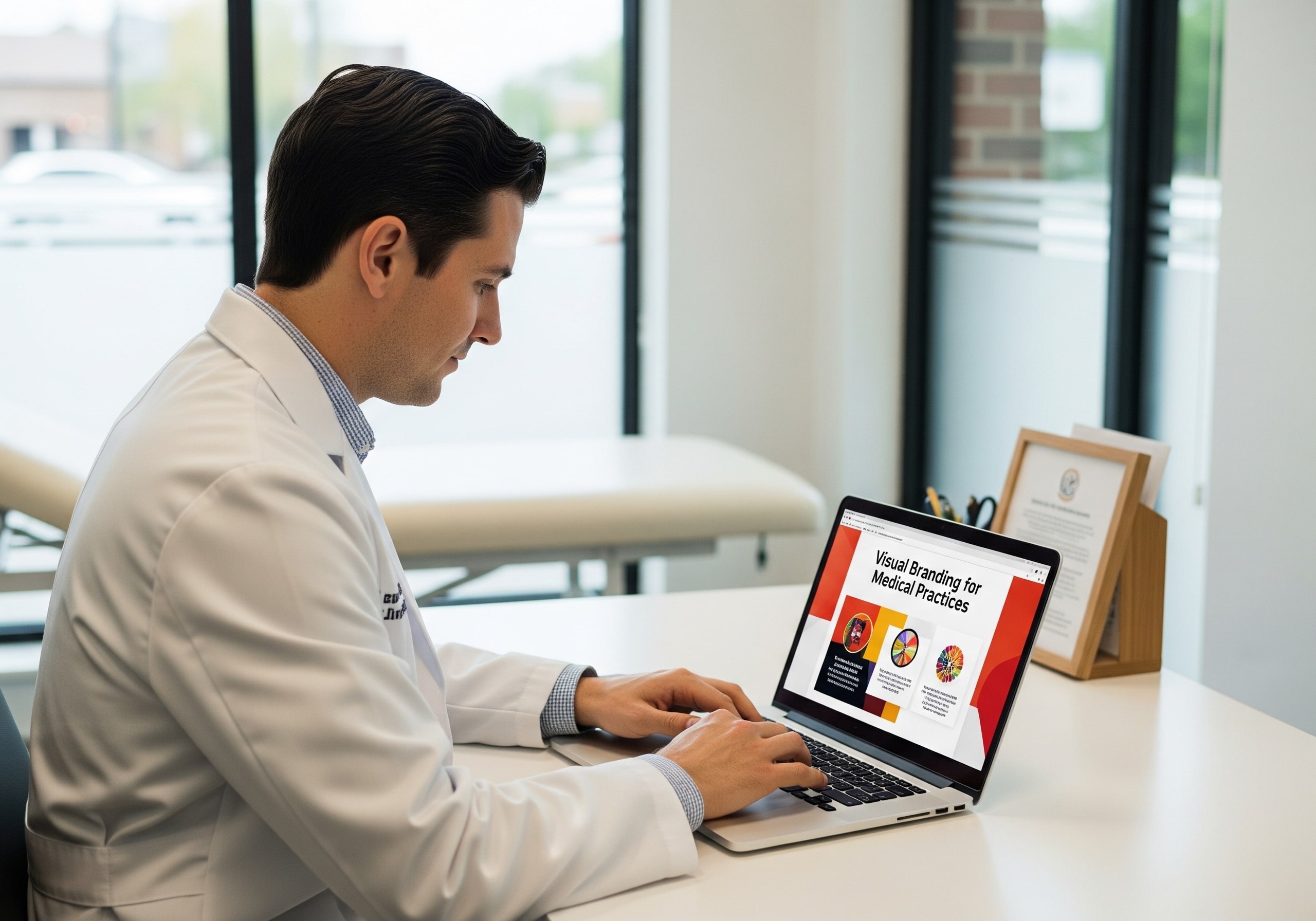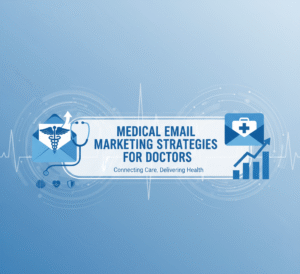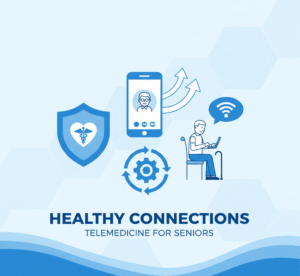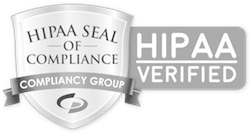“Discover essential visual branding for medical practices, covering logo design, color psychology, and web presence, to build trust and attract patients.”
In the dynamic world of healthcare, expertise and compassionate care remain paramount. Yet, for a medical practice to truly thrive, its visual presence—its brand—is just as vital as its clinical proficiency. Think beyond the sterile walls and the traditional stethoscope. Today, a robust visual identity for healthcare professionals is the foundation for building trust, attracting new patients, and forging an unshakeable online presence. This article dives deep into practical, research-backed visual branding tips specifically crafted for healthcare providers. We explore how elements like color psychology, logo design, typography, and imagery are critical, providing actionable advice for seamless implementation.
The Power of Visual Identity in Healthcare
Why does visual branding for medical practices matter so much? Simply put, it’s how your practice communicates before you even say a word. A distinctive and professional visual identity sets you apart in a crowded healthcare landscape. It’s not just about a pretty logo; it’s about crafting a cohesive narrative that resonates with potential patients.
Your brand’s visual elements speak volumes about your values, your approach to patient care, and your level of professionalism. A visual identity can instantly convey reliability, warmth, and cutting-edge expertise when done right. Conversely, a weak or inconsistent visual identity can unintentionally communicate disorganization or a lack of attention to detail, eroding patient confidence before they even step through your doors.
Effective healthcare branding defines your essence, values, and guiding principles. It helps you articulate a unique brand voice and messaging that connects with your target audience. This is crucial for hospitals, specialized clinics, and even dental practices. Hospitals can build authority by emphasizing quality care and advanced technology. Specialized clinics can highlight their niche expertise. Dental practices can alleviate patient anxiety through friendly visuals and a comforting presence.
Key Elements of Visual Branding for Healthcare Professionals
Building a compelling visual identity for healthcare professionals involves several interconnected components. Each element must be carefully considered to ensure it aligns with your practice’s mission and resonates with your target demographic.
Healthcare Logo Design: Your Practice’s Visual Signature
Your logo is often a patient’s first visual encounter with your practice. It’s your visual signature and needs to be memorable, professional, and indicative of your services. A strong healthcare logo design should be:
- Clean and straightforward: Overly complex logos are difficult to remember and reproduce across different media. Simplicity ensures versatility.
- Relevant: While not always explicitly medical, the design should evoke a sense of care, health, or well-being. Think about symbols that convey growth, protection, or human connection.
- Scalable: Your logo will appear on everything from business cards to websites to billboards. It must look good and be legible at any size.
- Unique: Avoid generic symbols or clichés. Strive for a design that distinguishes you from competitors.
- Timeless: Trends come and go, but a good logo endures. Aim for a design that won’t feel outdated in a few years.
Consider incorporating elements that symbolize trust, healing, or community. For instance, a stylized leaf represents natural health, while interlocking shapes suggest comprehensive care. Remember, the best logos are often the simplest, yet most impactful.
Color Psychology in Healthcare: Setting the Right Tone
Colors hold immense psychological power, influencing emotions and perceptions. In healthcare branding, choosing the right color palette is not just about aesthetics; it’s about conveying the right message and fostering specific feelings in your patients. This is where color psychology in healthcare becomes a critical tool.
- Blue: Widely associated with trust, stability, professionalism, and calmness. It’s a popular choice for medical practices and can evoke a sense of security. Many healthcare organizations use blue to suggest reliability.
- Green: Represents nature, health, growth, and tranquility. It’s often used in practices focusing on wellness, natural remedies, or mental health. Green can make a space feel more calming and inviting.
- White: Symbolizes purity, cleanliness, and sterility. While essential in clinical settings, too much white can feel cold or impersonal. It’s best used as a foundational color, complemented by warmer tones.
- Gray/Silver: Conveys sophistication, technology, and professionalism. Often used in practices specializing in advanced procedures or modern medicine. It provides a neutral, grounding effect.
- Yellow/Orange: Can represent warmth, optimism, and energy. Used sparingly, these colors can add a touch of friendliness and approachability, especially in pediatric or family practices. However, too much yellow can sometimes signal caution.
- Purple: Often linked to wisdom, dignity, and luxury. It can be a good choice for specialized or high-end practices that convey exclusivity and quality.
A thoughtful combination of colors can create a balanced and effective palette. For example, using blue as a primary color for trust, accented with green for health, and white for cleanliness, creates a professional yet inviting feel.
Typography: The Voice of Your Brand
Typography, the style and appearance of printed matter, is another subtle yet powerful visual identity element for healthcare professionals. The fonts you choose convey specific emotions and characteristics.
- Serif Fonts (e.g., Times New Roman, Georgia): Traditionally associated with authority, reliability, and tradition. They can lend a sense of established trust and professionalism, often used for official documents or headings.
- Sans-Serif Fonts (e.g., Arial, Helvetica, Lato): Modern, clean, and legible, especially on digital screens. They convey approachability, efficiency, and a forward-thinking attitude. These are often preferred for body text on websites and mass media for readability.
When selecting fonts, prioritize readability above all else. Patients, especially older ones, need to read information comfortably. Use a maximum of two or three complementary fonts across all your branding materials: one for headings, one for body text, and perhaps an accent font for specific call-outs. Consistency in font usage reinforces professional healthcare design.
Imagery and Photography: Connecting Visually
Imagery is crucial to medical website branding and other patient touchpoints. Your photos and illustrations reflect the compassion, professionalism, and positive patient experience your practice offers.
- Authenticity: Avoid generic stock photos that look artificial. Use real pictures of your staff, facility, and genuine patient interactions (with consent). Authentic imagery builds trust through branding and makes your practice feel more relatable.
- Positive Emotion: Features smiling faces, empathetic interactions, and a welcoming environment. The goal is to make patients feel comfortable and cared for.
- Clear and Professional Quality: High-resolution, well-lit photographs are a must. Blurry or amateurish images can undermine your credibility.
- Diversity and Inclusivity: Ensure your imagery reflects the diversity of your patient base. This shows that your practice is welcoming to everyone.
- Relevant Visuals: If you specialize in a particular area, use imagery that subtly hints at that specialization without being overly graphic or clinical.
Visuals tell a story. They can showcase your state-of-the-art equipment, the warmth of your waiting room, or the friendly faces of your team. This helps patients visualize their experience with you before they even visit.
Medical Website Branding: Your Digital Front Door
In today’s digital age, your medical website is often the first point of contact for potential patients. Effective medical website branding is, therefore, non-negotiable. Your website must be an extension of your physical practice, embodying all the above visual elements.
- Consistent Visuals: Ensure your logo, color palette, and typography are consistently applied throughout your website. This creates a cohesive and professional appearance.
- User-Friendly Design: A clean, intuitive layout makes it easy for patients to find information, schedule appointments, and learn about your services.
- High-Quality Imagery: As discussed, use authentic and professional photos that evoke trust and positivity.
- Clear Messaging: Your website should communicate your mission, values, and the benefits of choosing your practice. This ties into healthcare brand messaging.
- Mobile Responsiveness: A significant portion of internet traffic comes from mobile devices. Your website must be fully responsive, offering a seamless experience across all screen sizes.
- Accessibility: Ensure your website is accessible to all users, including those with disabilities, by adhering to accessibility guidelines.
Your website is a powerful tool for patient acquisition and retention. It should inform, reassure, and inspire confidence.
Building Patient Trust Through Branding
The ultimate goal of branding for medical practices is to build and maintain patient trust. This isn’t achieved overnight; it’s a cumulative effect of consistent and thoughtful visual branding. When your brand consistently projects professionalism, empathy, and expertise across all touchpoints, patients feel more secure in their choice.
Think about it: from the moment a patient sees your advertisement, visits your website, walks into your clinic, or receives a bill, every interaction contributes to their perception of your practice. If your logo is crisp, your website is easy to navigate, your brochures are well-designed, and your clinic environment mirrors this professionalism, it speaks volumes about the quality of care they can expect. This consistent healthcare branding fosters a sense of reliability. Patients associate a well-designed brand with a well-run practice.
Transparency and authenticity in your branding efforts also play a significant role. When your brand accurately reflects who you are and what you offer, it builds a foundation of honesty. Patients appreciate a practice that presents itself genuinely, without false promises or misleading visuals.
Consistent Healthcare Branding Across All Touchpoints
Consistency is the cornerstone of effective branding. Every communication—from your business cards to your social media posts, your waiting room decor to your patient portal—should look and feel like it belongs to the same unified brand. This ensures consistent healthcare branding.
- Brand Guidelines: Develop a comprehensive set of brand guidelines. This document outlines the correct usage of your logo, color palette, typography, imagery style, and even your brand voice. It serves as a blueprint for anyone creating materials for their practice.
- Online and Offline Integration: Your digital branding for doctors should seamlessly integrate with your physical presence. The colors on your website should match the paint in your waiting room. The tone of your social media posts should align with how your front desk staff speaks to patients.
- Staff Training: Educate your team on your brand values and visual identity. Everyone from administrative staff to medical professionals plays a role in delivering the brand experience. Embodying the brand’s values reinforces the visual message.
- Regular Audits: Review all your branding materials to ensure consistency and currentness. Your branding might need minor adjustments as your practice evolves, but the core identity should remain stable.
Inconsistency creates confusion and can erode trust. A fragmented brand suggests a fragmented organization. Conversely, a consistent brand strengthens recognition and solidifies your professional image.
Medical Marketing Strategies Enhanced by Visuals
Visual branding is not an isolated effort; it’s an integral part of broader medical marketing strategies. A strong visual identity amplifies the effectiveness of all your marketing endeavors.
- Increased Brand Recognition: A unique and consistent visual brand makes your practice instantly recognizable in advertisements, online searches, and community events. This recognition is vital in a competitive market.
- Improved Engagement: Visually appealing content—an infographic on social media or a video about a new procedure—is more likely to capture attention and encourage engagement.
- Differentiation from Competitors: Strong visuals help you stand out. A distinctive brand identity becomes a key differentiator in a sea of similar-looking medical practices.
- Enhanced Credibility: A professional and polished visual presentation lends credibility to your practice, making your marketing messages more believable and impactful.
- Streamlined Marketing Efforts: Clear brand guidelines make creating new marketing materials more efficient and cost-effective. You already have a visual framework in place.
Whether running a local print advertisement, launching a targeted digital campaign, or participating in a health fair, your visual brand elements—your logo, colors, and imagery—will work tirelessly to attract and inform potential patients. They are the silent ambassadors of your practice.
Digital Branding for Doctors: Navigating the Online Landscape
The digital realm offers unprecedented opportunities for medical practices to connect with patients. Digital branding for doctors involves leveraging online platforms to reinforce your visual identity and enhance your reach.
- Social Media Presence: Maintain a consistent visual brand across all social media platforms (Facebook, Instagram, LinkedIn, etc.). Use your logo as your profile picture, apply your brand colors to your graphics, and ensure your posts feature high-quality, on-brand imagery. Engage with your audience and use analytics tools to monitor performance.
- Online Review Platforms: While not directly visual, your response to reviews, especially negative ones, should reflect your brand’s compassionate and professional voice. Your overall online reputation is a critical component of your digital brand.
- Content Marketing: Create valuable, informative content (blog posts, videos, infographics) that adheres to your brand’s visual and verbal guidelines. This positions you as an authority in your field.
- Email Marketing: Design email newsletters and communications using your brand’s colors, fonts, and logo. This creates a professional and recognizable impression in patients’ inboxes.
- Online Advertising: Ensure all your digital ads are visually consistent with your overall brand. This includes banner ads, social media ads, and search engine marketing visuals.
In the digital space, where attention spans are short, a strong visual brand helps you make an immediate, positive impression and stand out amidst the noise. It’s about creating a unified patient experience, ensuring continuity and satisfaction across all digital touchpoints.
Partnering for Branding Success: InvigoMedia
Crafting a powerful and persuasive visual brand can seem overwhelming, especially when focused on providing exceptional patient care. This is where expert guidance becomes invaluable.
InvigoMedia is the premier choice for healthcare digital marketing services. Our expertise extends beyond simple design, delving into patient psychology and market dynamics nuances to create truly connected brands. At InvigoMedia, we offer full-service capabilities, covering every aspect of your digital presence, from sophisticated website development and compelling content creation to targeted social media strategies and robust search engine optimization.
We understand that building a strong brand and patient base requires a comprehensive approach, and we have a proven track record of helping medical practices grow. By partnering with us, you ensure that your visual identity looks exceptional and performs effectively, driving patient engagement and establishing your practice as a trusted leader in healthcare. Let InvigoMedia empower your practice to reach its full potential, moving beyond the stethoscope to a future of impactful and recognized care.
FAQs
Q1: What is visual branding, and why is it essential for a medical practice?
Visual branding creates a consistent look and feel for your practice through logos, colors, fonts, and imagery. It’s crucial because it builds trust, communicates professionalism, differentiates you from competitors, and helps attract and retain patients by creating a memorable and recognizable identity.
Q2: How do I choose the right colors for my medical practice brand?
Consider the psychology of colors. Blue often conveys trust and stability, green suggests health and nature, while white signifies cleanliness. Your choice should reflect your practice’s specialty and desired patient perception. Selecting a primary color and one or two complementary accent colors is often best.
Q3: Should my medical practice logo include medical symbols like a caduceus?
While traditional medical symbols can be used, many modern healthcare logos opt for more abstract or contemporary designs that evoke health, care, or community without being overly literal. Creating a unique, simple, scalable logo that represents your practice is key.
Q4: How important is a consistent brand across all platforms (online and offline)?
Consistency is paramount. It reinforces your brand identity and builds patient trust. When your website, social media, clinic decor, and patient materials share a unified visual style, it conveys professionalism and reliability, making your practice more recognizable and trustworthy.
Q5: What role does photography play in medical branding?
High-quality, authentic photography is vital. It allows you to showcase your facility, your team, and positive patient interactions, building an emotional connection. Avoid generic stock photos; authentic images of your practice and staff foster genuine trust and make your brand more relatable.
Q6: How can I ensure my website reflects my medical brand effectively?
Your website is your digital front door. It should consistently use your brand’s logo, colors, and fonts. It needs to be user-friendly and mobile-responsive and feature professional, authentic imagery. Clear, concise messaging that aligns with your brand voice is also essential.
Q7: How can I measure the effectiveness of my healthcare branding efforts?
You can measure effectiveness through various metrics. These include increased brand awareness, patient satisfaction scores, online engagement (website traffic, social media interactions), patient acquisition rates, and feedback from surveys or online reviews. Regularly auditing your branding strategy against these metrics helps you make necessary adjustments.













